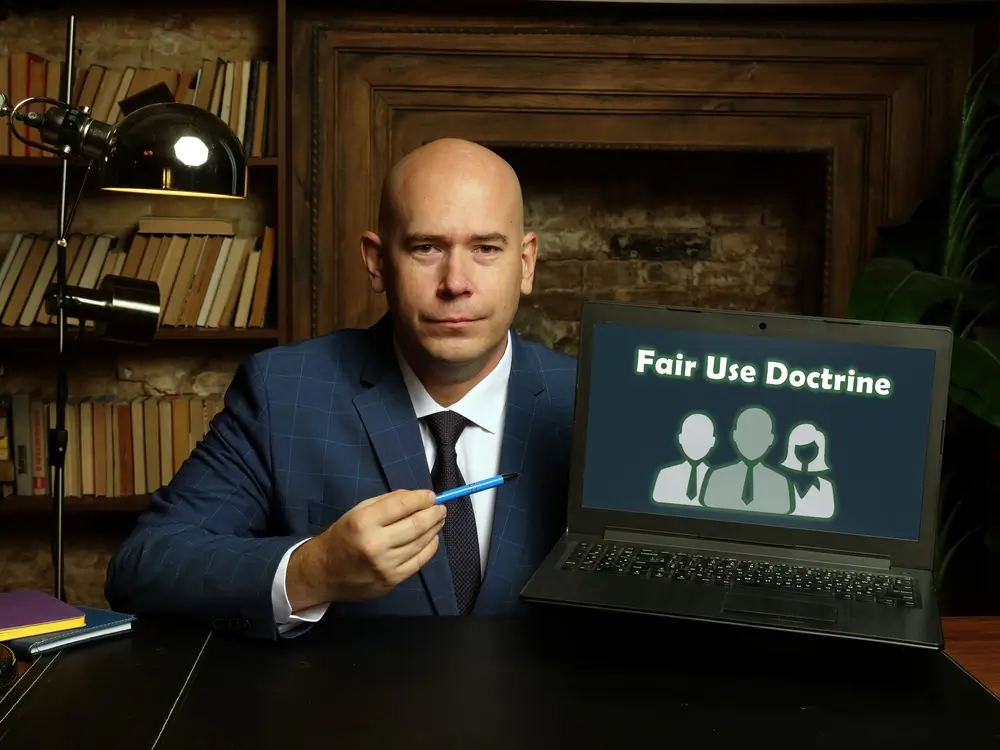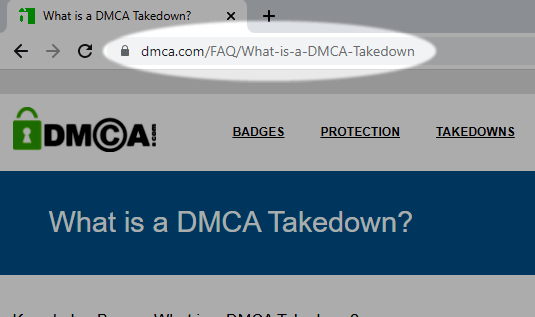
There is a doctrine in the United States copyright law called “Fair Use” which allows people to use your content without your permission. One of the first issues to establish before sending out your DMCA takedown notice is whether or not you have grounds to file one. Often an infringing publisher will claim "Fair Use" to describe their right to publish. The aspect of fair use within publishing is well documented. If you would like assistance with your takedown request, go here to submit the form.
Take into consideration the following:
Fair Use
Fair Use is now widely accepted in most countries around the world. It allows the limited use of copyrighted material without requiring permission from the copyright owner. Items considered Fair Use would be commentary, criticism, news reporting, research, teaching or scholarship. It provides for the legal, non-licensed citation or incorporation of copyrighted material in another author’s work under a four-factor balancing test.
It references four factors to measure fair use. They are:
- The nature of the copyrighted work;
- The purpose and character of the use, including whether such use is of a commercial nature or is for nonprofit educational purposes;
- The amount and substantiality of the portion used in relation to the copyrighted work as a whole; and
- The effect of the use upon the potential market for or value of the copyrighted work.
This is important because if a smaller photo of yours is used or a few words out of an entire document is used this could fall under Fair Use depending on the site and the use. If someone were to take a paragraph of your work, or a site has copied your entire site or pictures, and they run a business profiting from your copyrighted work, then most likely its copyright infringement. It is usually very obvious when you see how your work is being used whether the content is being used under the Fair Use criteria or for profit.
DMCA Takedown Fast Tip
You can see a full list of FAQs by the US Copyright Office to help you determine if Fair Use applies in your case.
If my stolen content is not Fair Use, what do I need to get started?
You must provide the following to get started filing a DMCA Takedown Notice:
1. Description of Ownership

What is the content owner's name and how was the content stolen? How is this content yours? How do you own it? Did you create it, buy it, copyright it? Who is claiming ownership of the content? Who is authorized to file the DMCA Takedown? When did you create the content and when was the content stolen?
An example description would sound like: "My photo I took of myself on my camera was stolen from my Google Drive and was posted on this website without my knowledge and I would like it removed."
If you are unsure how to collect the information for these three categories the Professional Takedown Team at DMCA.com can help with the answers. Click here to ask us about your situation.
2. Source URL

Where was your content located when it was stolen? Was it on your social media profile? Was it from your own website? Provide the exact URL where it was stolen from, even if the content has already been removed from its original location. The original URL is still valuable to the notice. If it was not online you can reference cell phone, computer, or camera etc. If it was online such as a website or cloud storage provide the link to the exact page it was stolen from. You can upload the original content to a cloud storage service and provide that URL with an explanation of where it was originally stolen from.
An example link would look like: https://share.icloud.com/photos/my_original_content
3. Infringing URL

Where on the internet (or platform like Facebook or TikTok) is your stolen content located? What is the link that you want the content removed from? Be sure to provide the URL or website/webpage link of the content you want removed. If the stolen content is an image or video located on a website provide the direct link of the content contained in the site. Copy and paste the infringing text, or provide the URL of the infringing image if required.
An example link would look like: https://www.badguy_site.com/webpage/image_2
Who can file DMCA Takedown Notices?
- code writers and publishers
- content creators/owners
- copyright owners
- social media users and participants
- content publishers or distributors (with permission of the content or copyright owners)
- NFT owners
- subject contained within the content and published without permission (special considerations may be required)
If you are unsure on how to answer any of these questions, we can help! Click here to Ask us about your situation.
DMCA Takedown Testimonial
DMCA.com is AMAZING! We had our original content stolen and posted to another website without our authorization. This person had posed that my wife was one of his "models" and used our pictures and videos in her fake profile. We spent nearly a month emailing the websites "admin" and flagging each video and photo daily for copyright infringement, but had no luck. We never even got a single response. After discovering DMCA.com, we immediately opened a case and in less than a week, every trace of my wife on this site was gone! If you ever have a need to get something sensitive removed from a website, or simply don't want your content on someone other person's website, let DMCA.com help. They are truly professionals and my wife and I are forever grateful! -J&L ~ St. Paul, Minnesota
Which websites will check for Fair Use and process DMCA Takedowns?
Notices can be filed through many different websites and platforms. Here are some examples:
- by the by the ISP or Hosting company of the website that is publishing the infringing content. This occurs because the website owner has not voluntarily complied with a DMCA Notice and the ISP or Hosting company must comply with the Takedown notice.
- from a UCG (User Generated Content) Platform (like Facebook and TikTok), upon receipt of a DMCA Takedown Notice sent by or on behalf of the infringed content owner, distributor, publisher etc.
- by the website owner, upon receipt of a DMCA Takedown Notice from the website owner's ISP / Hosting company. This would occur when ISP / Hosting company receives a notice sent by or on behalf of the content owner, distributor, publisher etc.
- when an infringing website is taken down or taken "offline" by its ISP or Hosting company. This occurs because the website owner does not voluntarily comply with a Takedown notice as described above.
- by the website owner upon receipt of a DMCA Takedown Notice from the, or on behalf of, the content owner, distributor, publisher etc.
What happens if the infringing site claims it is Fair Use?
If this is the case, a DMCA Counterclaim or Counter Notice is submitted in response to a valid DMCA Takedown by the accused infringing website or content owner to claim "Fair Use" if this is what they believe. This is submitted to the service provider (OSP/ISP) after the DMCA Takedown Notice has been submitted and after the content has been removed from the listed infringing website.
A counterclaim claiming "Fair Use" cannot be used to defend against or as a defense to a Takedown Notice.
A counterclaim claiming "Fair Use" cannot be used to delay the process of a Takedown Notice.
Once the service provider (ISP/OSP) has received a valid DMCA Counterclaim stating "Fair Use" they must wait 10-14 days before they re-activate or allow access to the claimed infringing content. Unless the copyright owner (complainant) files a order in court against the infringing site owner, the defendant (ISP / OSP subscriber) and demonstrates the order to the ISP/OSP.
If you need to process a Counterclaim, we can help. Click here to submit the form.
You can find more information on Fair Use here:
- Wikipedia
- US Copyright Office
- Legislation - page 12
- Specific References
Related DMCA Takedown FAQ's
- What are DMCA Takedowns
- What is DMCA.com
- How Can I Reduce Fake DMCA Takedown Notices
- How Can I Get My Name Removed from a Website
- How Can I Get My Name Removed from Google Search Results
- How Can I Remove Defamation Online
- What is Personal Reputation Monitoring
- What is a DMCA Counterclaim